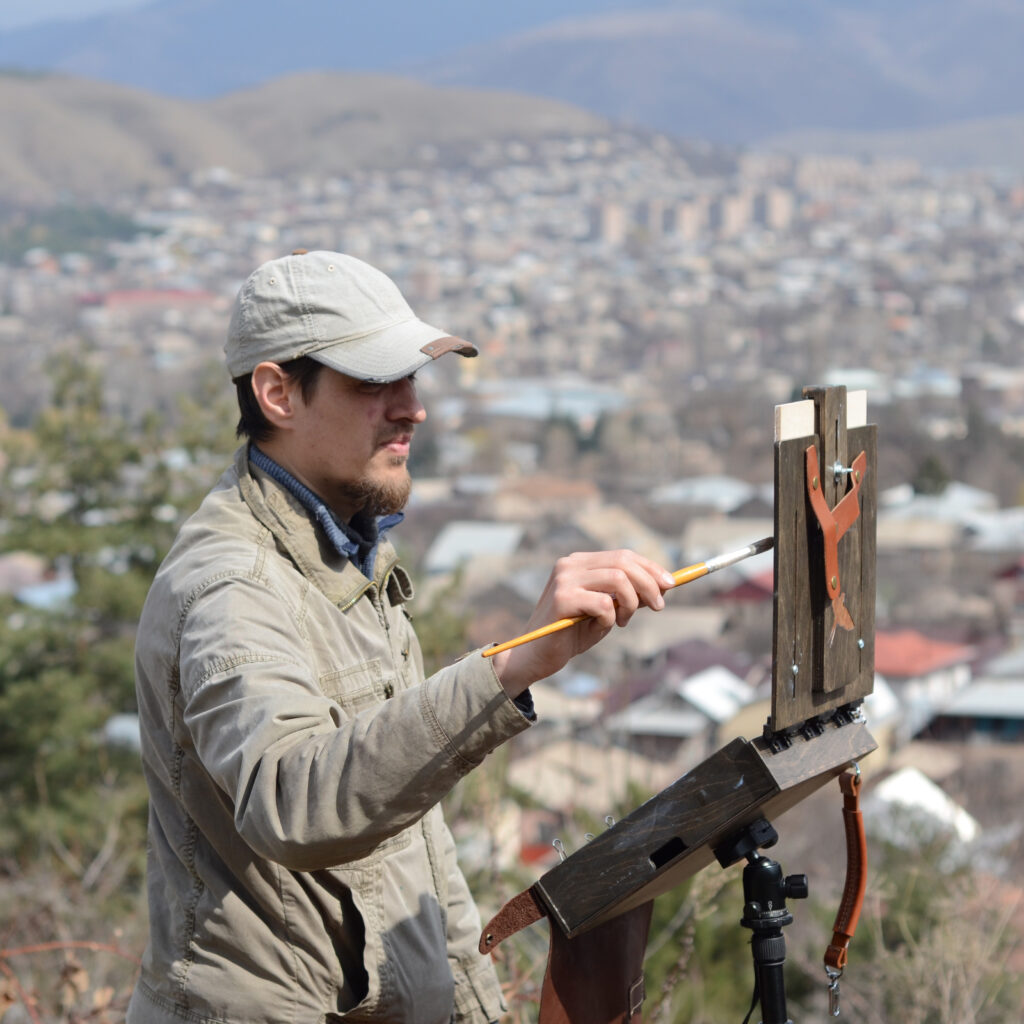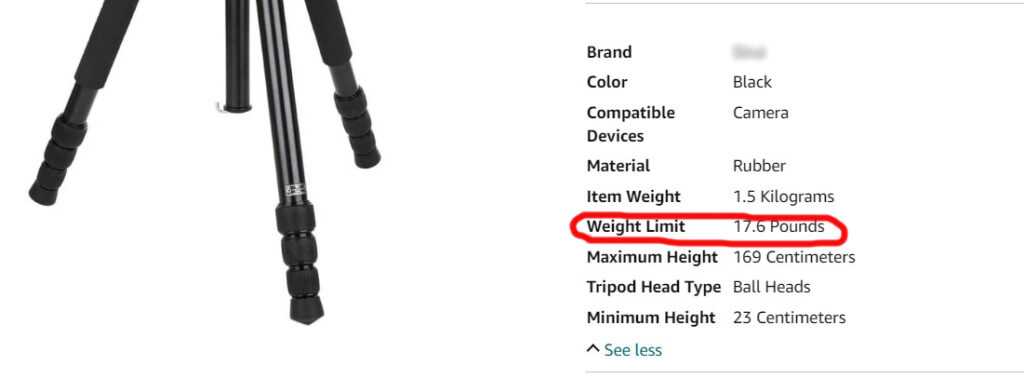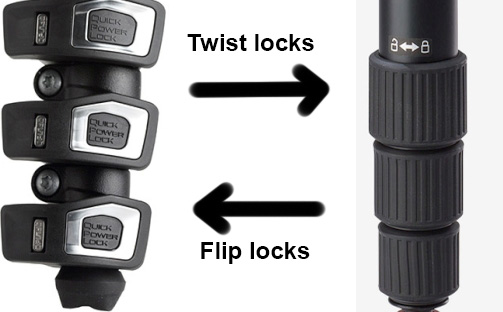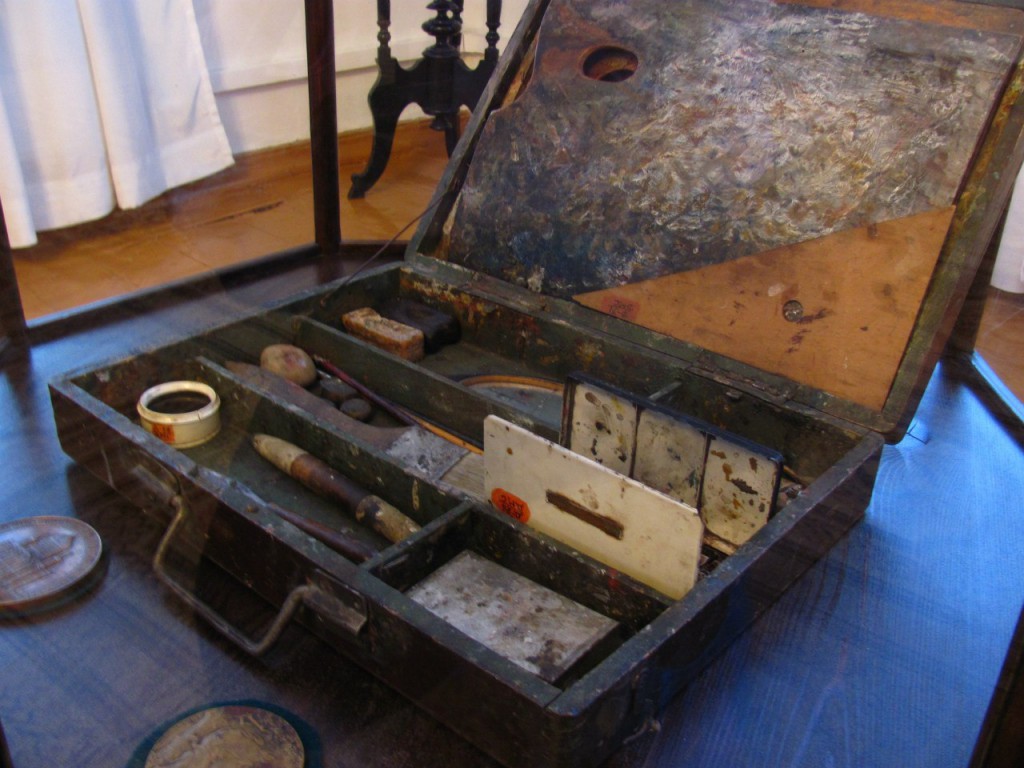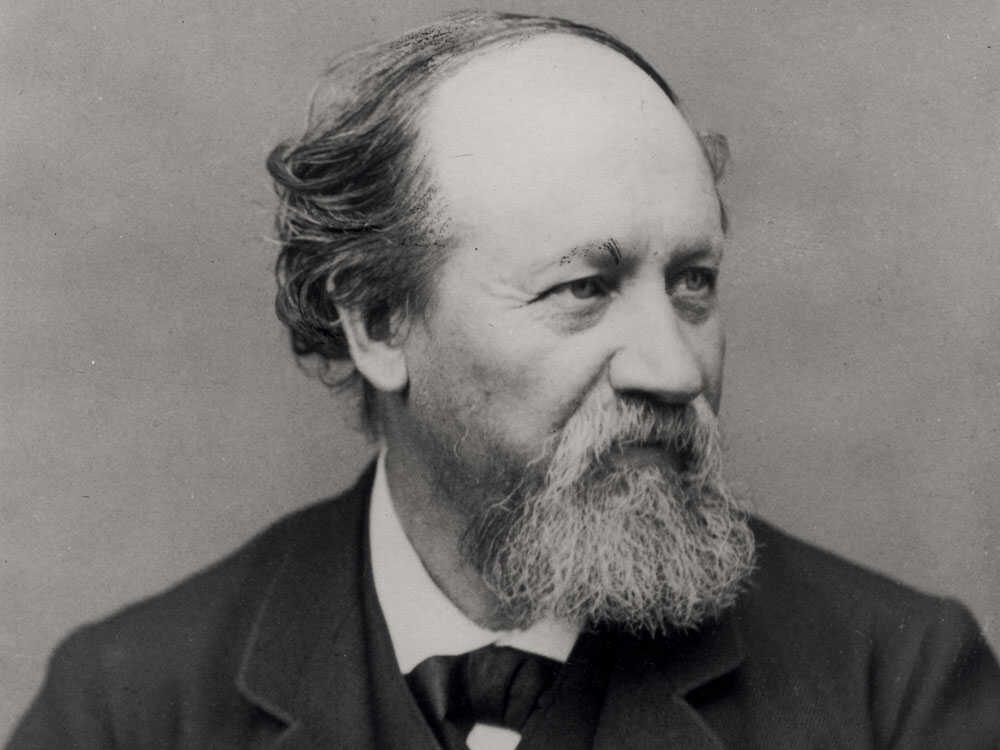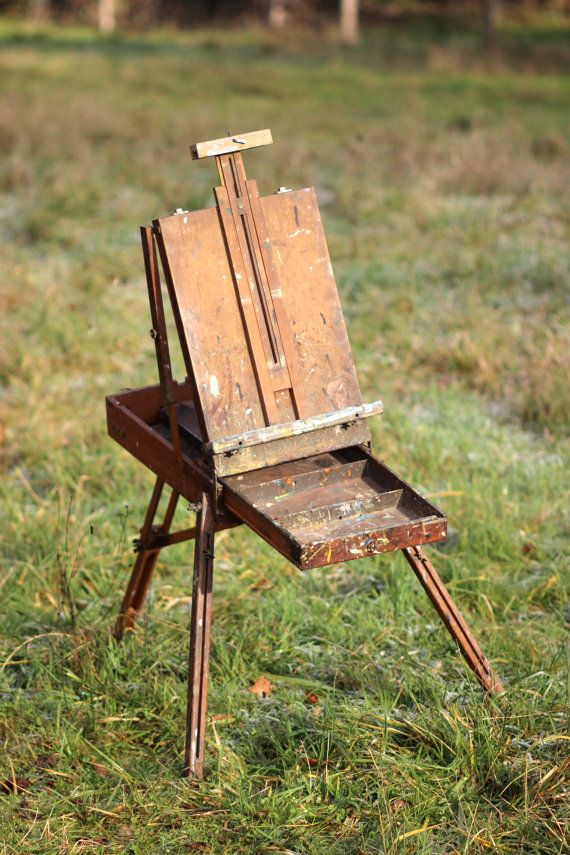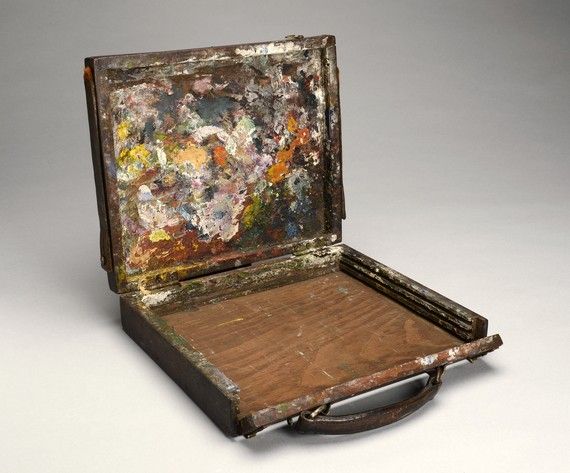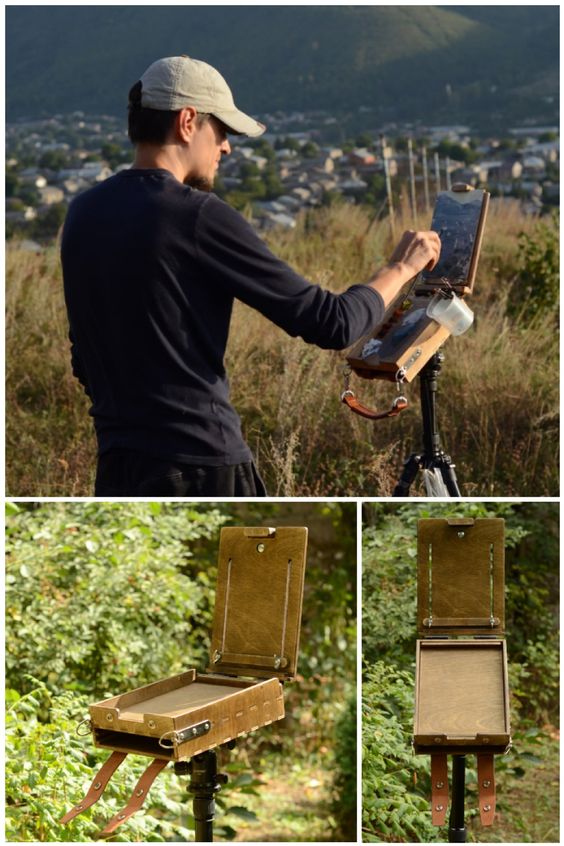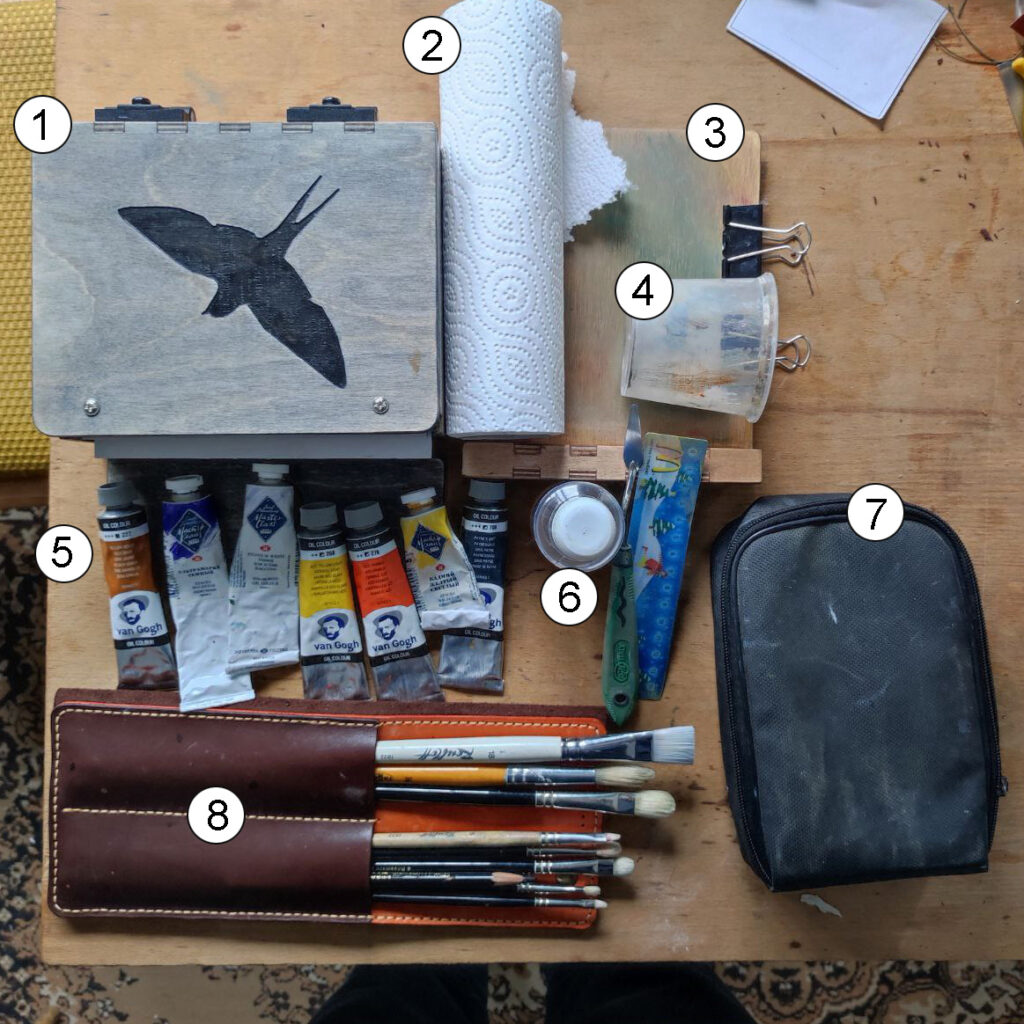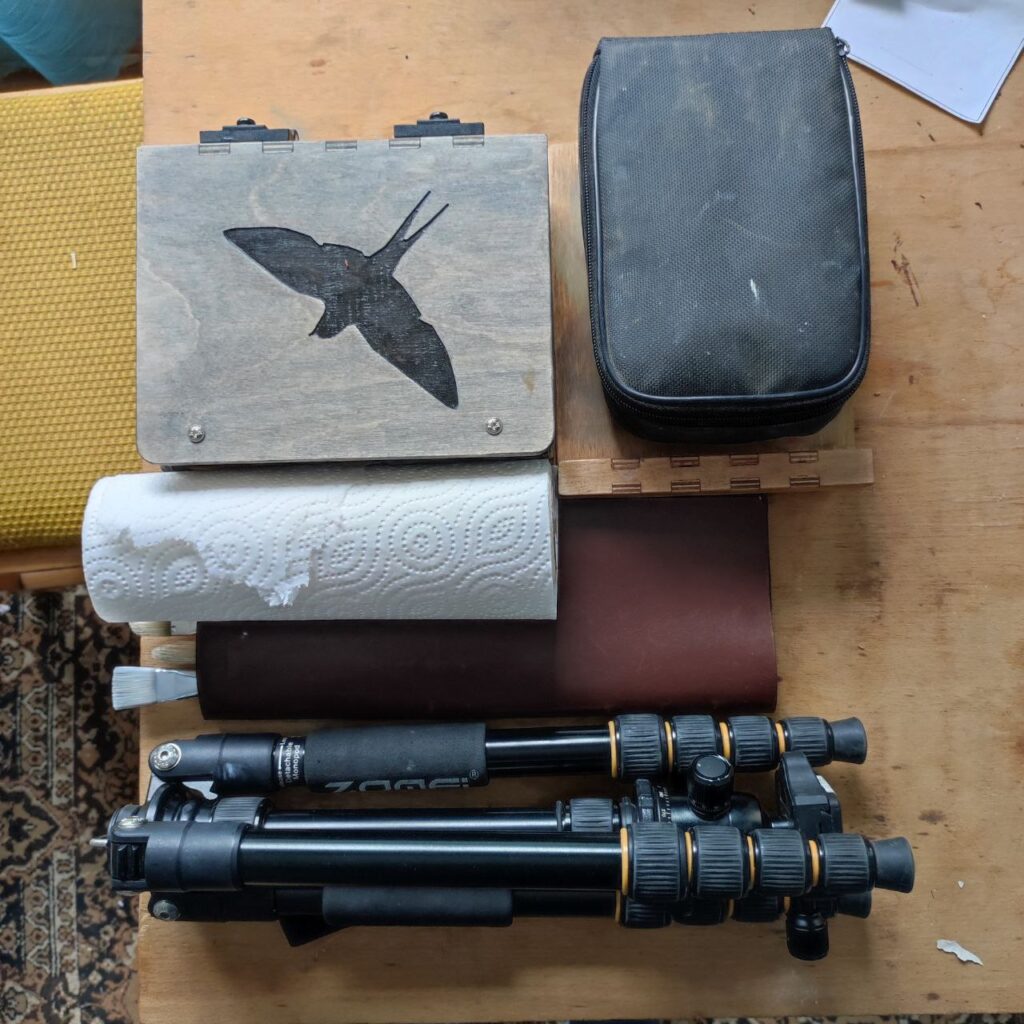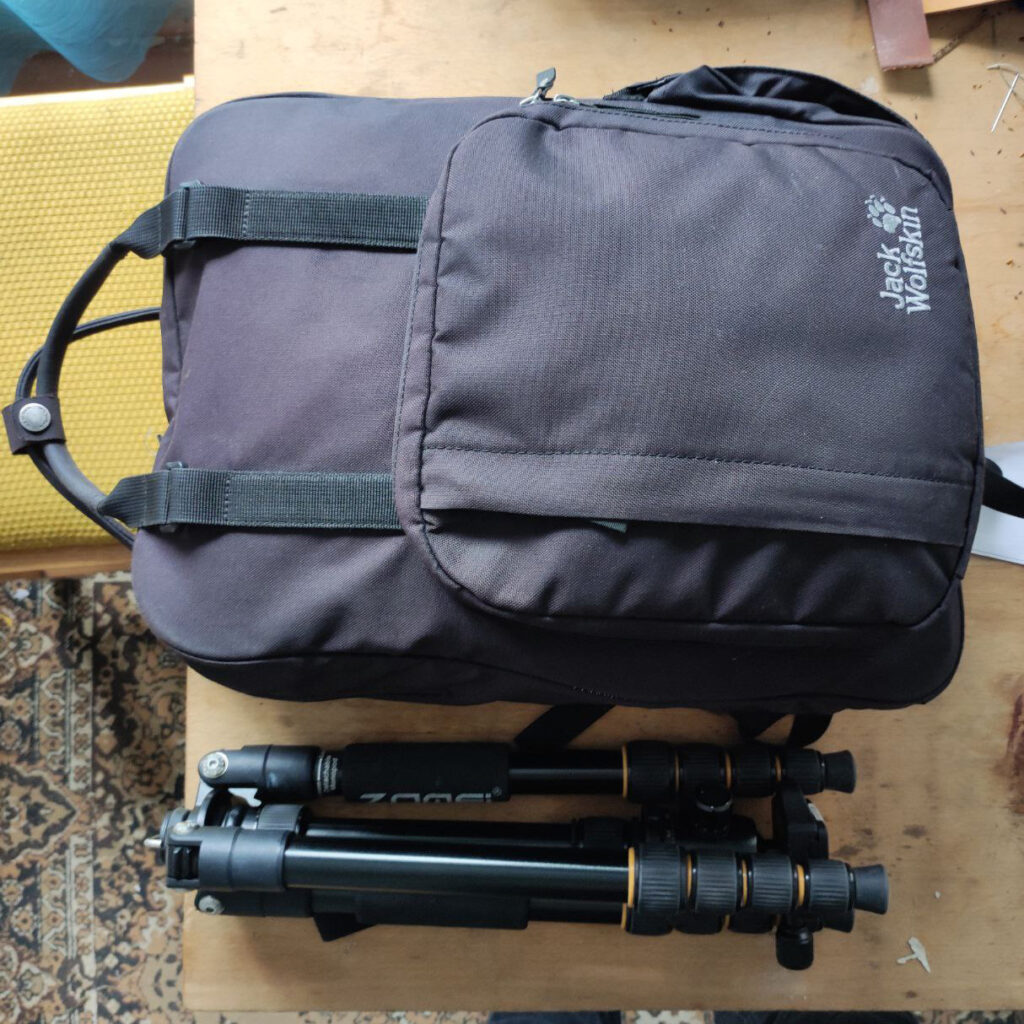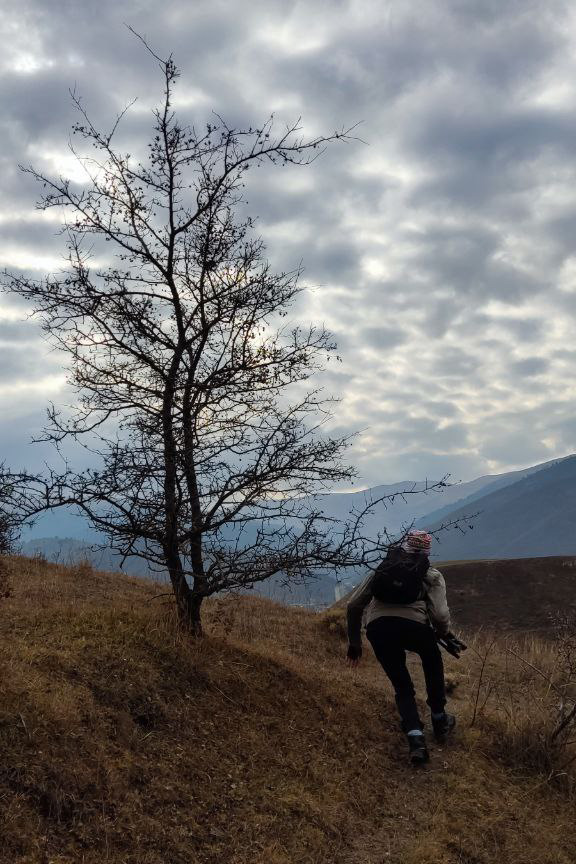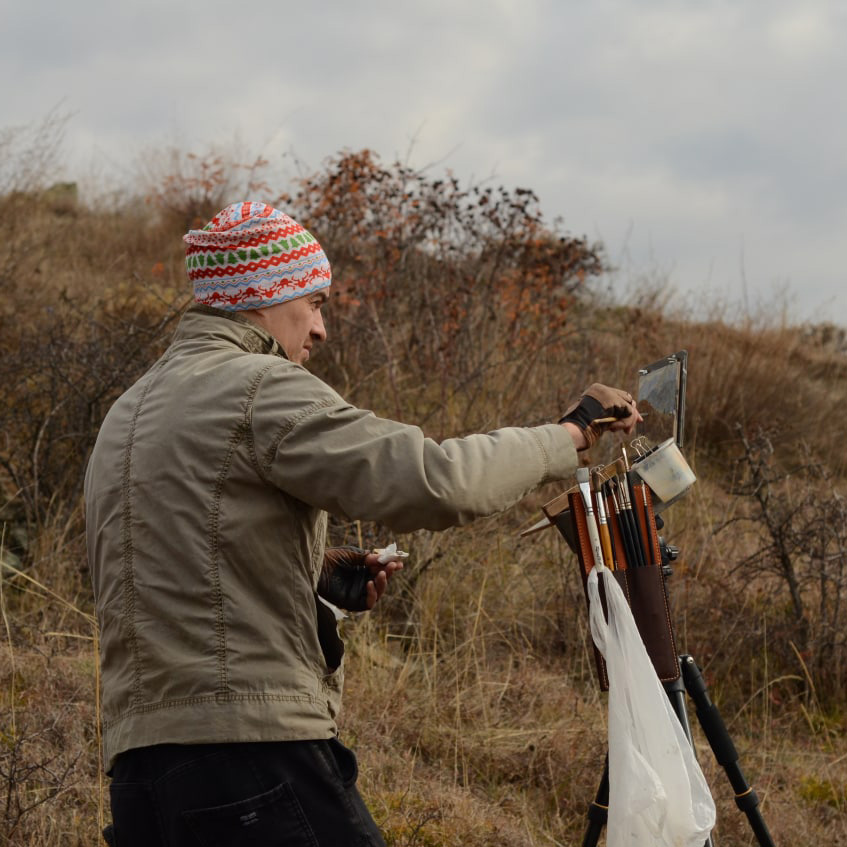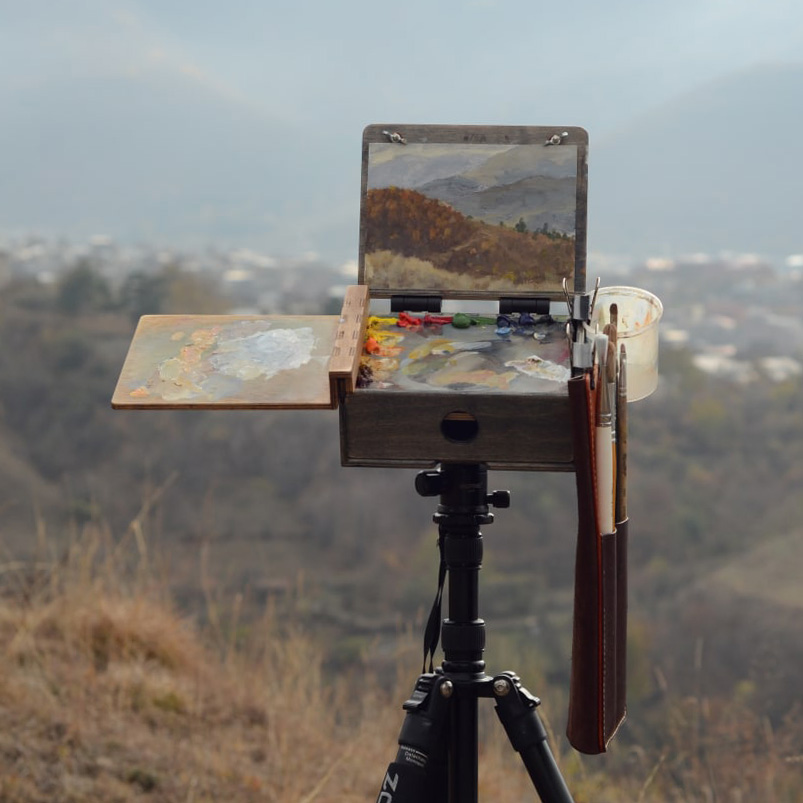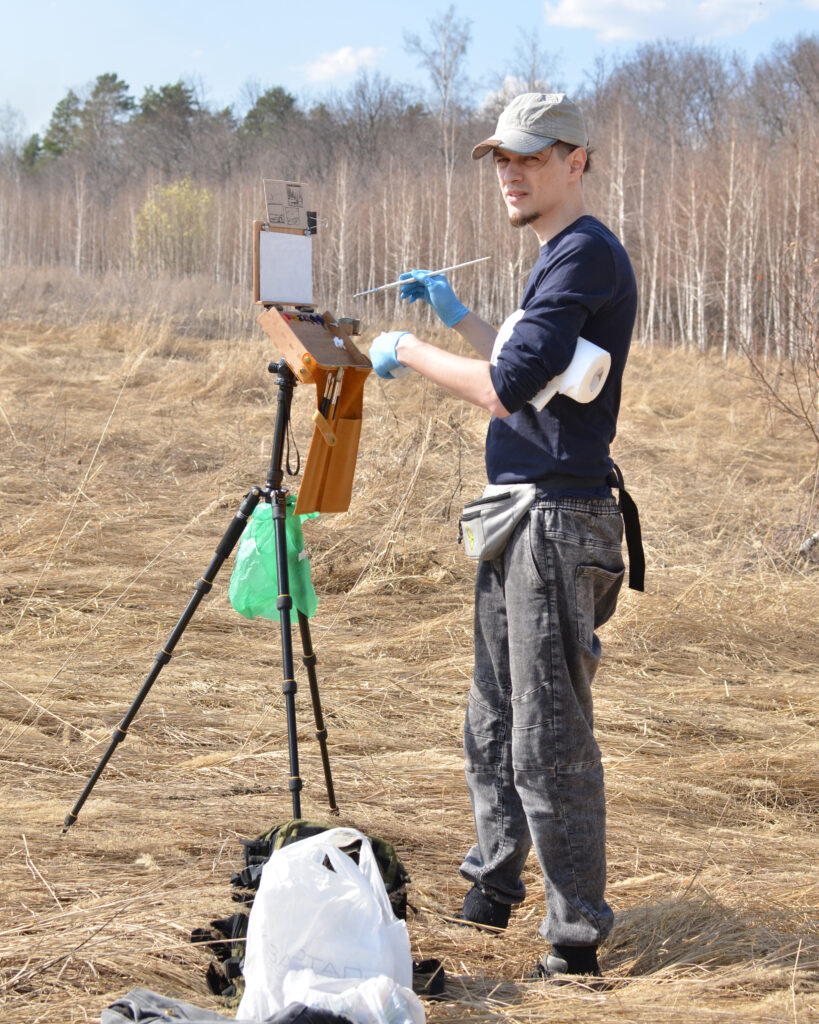I make pochade boxes to be installed on a standard photo tripod with the 1/4″-20 UNC screw. So the pochade box has a nut at its bottom to mount like a photo or video camera.
I am not selling tripods at my shop by several reasons. First of all, by the reason of saving your money. It would be cheaper for you to order a tripod on Amazon or directly from the manufacturer webstore. Second reason is that it is dependent of your conditions, such as:
- your height;
- the weight of your pochade box;
- the way you’d like to travel with it.
Here are some key features and considerations when choosing a tripod:
1) Stability. Tripod should be sturdy and stable to support the weight of your pochade box. Look for tripods made of durable materials like aluminum or carbon fiber, which offer a good balance of stability and portability.
2) Load Capacity, sometimes referred to as a weight limit or maximum load.
The rule of thumb for the load capacity is the more the weight and dimentions of your pochade box, the more the load capacity should be:
- for the lightest pocket pochades like Martlet for 4×6 or 5×7 the weight limit of 3-4 kg would be fine.
- for the medium ones that weight around 1 kg like Martlet for 6×8, Alpine 8×10, small sketch boxes or watercolor pochades I recommend to have the load capacity of 5-6 kg.
- for the larger pochade boxes the weight limit should be 12 kg or more.
As you see, it is not a linear dependance. The tripods with high load capacity are made more sturdy, stable and are less likely to overturn with your pochade due to the wind.
3) Height and Adjustability. Check the maximum and minimum height of the tripod to ensure it suits you. Look for adjustable legs with multiple sections and a center column that allow for flexible positioning.
The maximum height of the tripod should be enough to place a pochade box at the level of your chest.
The minimun height may be importand if you’d like to put it in your backpack. Though, I advise you not to put everything in your backpack to save your back from overload and subsequent problems.
4) Leg Locking Mechanism. Tripods often feature different leg-locking mechanisms, such as twist locks or flip locks.
I have been using both and prefer twist locks because I find it more reliable and less likely to be damaged. On the other hand, flip locks are qiucker to set up.
5) Head Type. Tripods usually come with a detachable head, which allows you to mount your camera and make adjustments. The most common types of tripod heads are ball heads and pan/tilt heads. Ball heads offer more flexibility and quick adjustments, while pan/tilt heads provide precise control over movement.
Since we have no need for a precise positioning, always look for a ball head.
If you have a big pochade, also look for a wider quick release plate. The pochade will be less likely to turn on it when you’re painting.
6) Weight and Portability. Carbon fiber tripods are lighter than aluminum, but they are generally more expensive.
7) Price. It’s generally worth investing in a quality tripod that suits your requirements. The plein air practice is complex enough even without fighting with your gear every time you’re painting outdoors. However, I would not recommend crazy expensive tripods as they will have some special features you won’t need (say, built-in levels, high precision head, etc).
If you are after a multipurpose tripod for using with your different sized boxes and your photo camera (often to take some photos of your art yourself), I would recommend a tripods with 12 kg load capacity. Here are some options I found at Amazon.
- Zomei Q666. A cheaper option – chinese made, but fairly good quality. Not a miracle, but will suit your needs for sure. I use it all the time and can vouch for it. Aluminium. Height: 152 (max) – 38 (min) cm. Weight: 1.42 kg. Price: 62 USD.
- SIRUI T-1004XL/E-10. Aluminium. Height: 169 (max) – 23 (min) cm. Weight: 1.5 kg. Price: 210 USD.
- SmallRig 62.2″. A cheap carbon fiber one with flip locks. Height: 158 (max) – 42 (min) cm. Weight: 1.2 kg. Price: 149 USD
- Rollei C6i. Carbon. Height: 133 (max) – 16 (min) cm. Weight: 1.17 kg. Price: 169 USD
Hope this information will be of some help to you. Thank you for reading!

